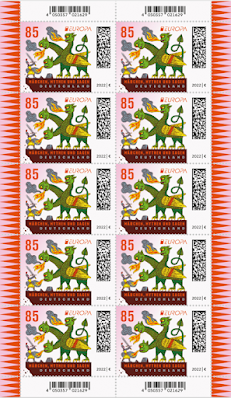Floating islands
In many
island cultures we find legends of so-called floating islands - islands
that have mysteriously drifted in from the sea, disappeared again, or
run aground and conjoined with other islands, often as a result of
witchcraft or similar phantasmic happenings.
The
Faroe Islands are no exception in this regard. Most of our smallest
islands have some form of floating island legends. In his work from 1673 ”FAROÆ ET FÆROA RESERATA”
the priest Lucas Debes describes this phenomenon and attributes it to
icebergs drifting past the islands, or a Satanic veiling of the
superstitious population. A century later, in 1781-82, Jens Christian
Svabo, a man of the Enlightenment, rejected Debes’ theories and
attributes the phenomenon to rocklike clouds drifting on the horizon or
even ”pollamjørki”, the Faroese term for heavy drifting sea-mist.
And
there is little doubt that Svabo’s assumption was correct. Anyone who
has seen dense sea fogs drift over and alongside these tiny islands,
cannot help feeling that the island itself had begun floating over the
sea and through the fog. But reality is usually less interesting than a
good story, so let us stick to the legendary world’s colourful
explanation of nature’s visual illusions - and look at a few examples of
islands that have come floating with their mountains and valleys – and
even with pigs and giants following in their wake.
Svínoy – Island of pigs
Just
as many other islands Svínoy is said to have originally been a floating
island. It often appeared in the north, but it was rarely seen because
it was usually shrouded in fog. Now we need to tell you the story of how
it came to be one of the permanent inhabited islands in the Faroes.
In
the village of Viðareiði on Viðoy, a farmer kept a sow but had no boar,
a mature male swine. Despite this, the sow became pregnant and had
piglets every year. People were astounded and one could explain how this
could have happened. It was well known that the sow occasionally
disappeared from the village, but it was never gone for a long time.
One
day the sow was seen running eastwards through the village - over the
isthmus - and down towards a small bay called Eiðsvík. One of the women
in the village got a hold of it and hastily tied a bundle of keys to its
tail. The sow then ran into the sea and swam away from land.
A
moment later an island was seen drifting from the south. The villagers
quickly manned a boat and rowed to the island. This time it did not
disappear from sight and they were able to go ashore. Since the sow had
iron keys attached to its tail, it fastened to the seabed and the
surrounding fog disappeared like dewdrops in the sun. And there the
island has stayed ever since.
Ever since the
island has been called Svínoy (Pig Island) because of its multitude of
pigs - and it was there that the sow from Viðareiði found its mate.
(From Faroese Anthology by V. U. Hammershaimb, Copenhagen 1891)
Mykines island
Another legend deals with ”risi”,
a kind of prehistoric giant or colossus who wanted to live in the Faroe
Islands. But the islands he really liked were much too small for him.
He therefore decided to join some of the smaller islands together in
order to create some wiggle room for himself. First, he found the small
island of Koltur and placed it where it is today. Then he headed down to
Skúvoy and was about to move it up to Koltur. But people on Skúvoy did
not like the idea and asked the giant if he really wanted to live on an
island that used to belong to ”Kálvur lítli” (Little Calf). Kálvur lítli
was a medieval priest, notorious for his evil and wicked ways. The
giant did not quite know - he thought that the island had once belonged
to a baby calf - and it would probably be beneath his dignity to live in
such a place.
The giant then waded northwards
and in the north of the Faroe Islands he finally found a reasonably
large island that seemed to fit his fancy. He started pushing it
southwards, in the direction of Koltur – and everything went reasonably
well. But when he came to the shallow fish banks just west of Vágar, the
island ran aground and got stuck. For a whole week he struggled to get
the island free from the sandy banks, but it would not move an inch.
Eventually, the giant became furious and shouted: ”My life! My death! If I only could dislodge this island, I would sink it into the sea!”
When
he finally realized that he would not be able to have the island for
himself, he certainly did not want anyone else to settle there. This is
how the island of Mykines found its location in the Faroese archipelago –
so now we know what happened.
Occasionally,
people from Sørvágur can see another island floating in the north. It
has high mountains, deep valleys and white foaming waterfalls. When
people from Mykines hear this story, it raises their concern. Who knows,
perhaps the giant is still roaming around and might want to sink
Mykines into the ocean to make room for his own new island?
(Loosely retold: Faroese Anthology by V. U. Hammershaimb, Copenhagen 1891)
Anker Eli Petersen
 Germany
Germany





















